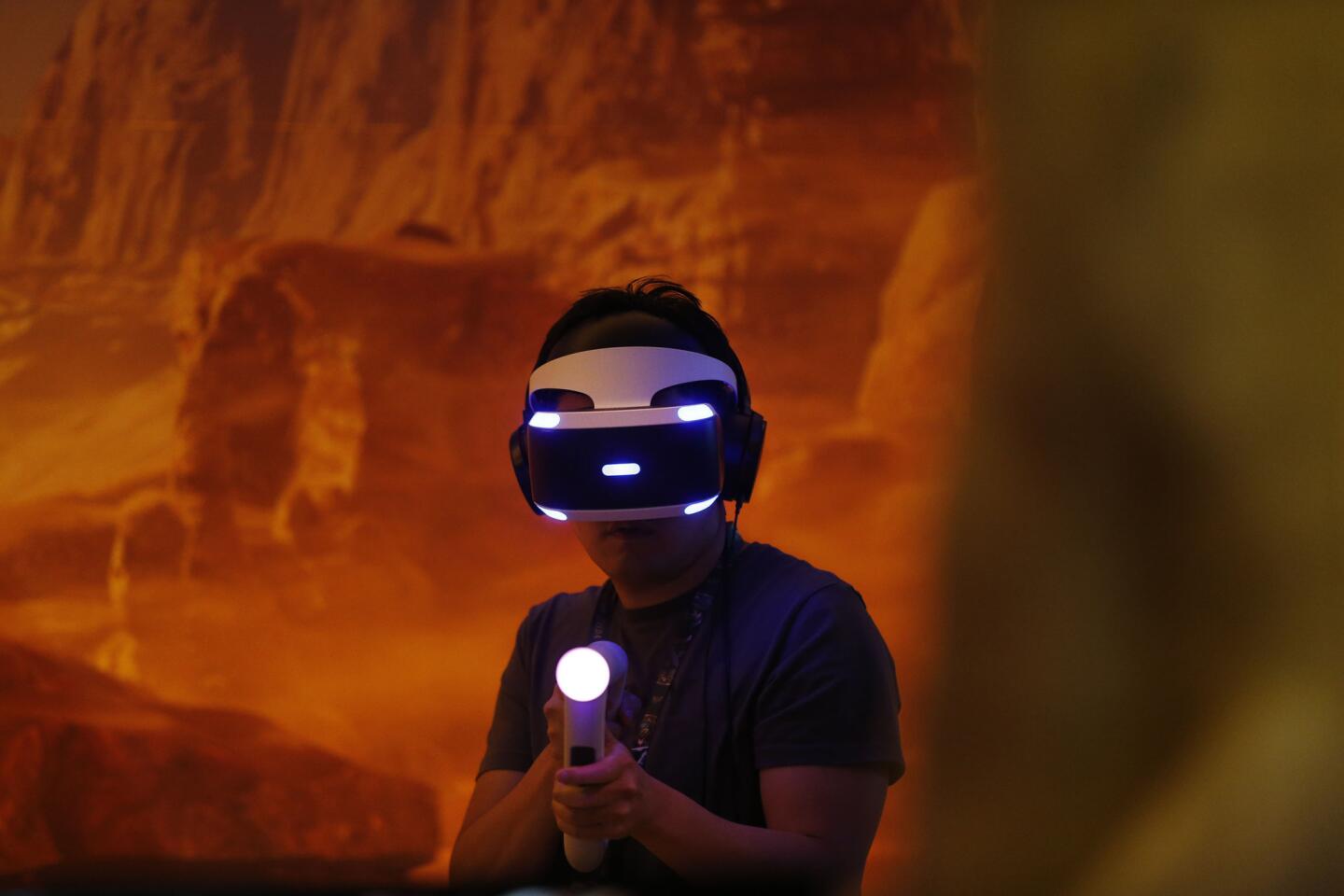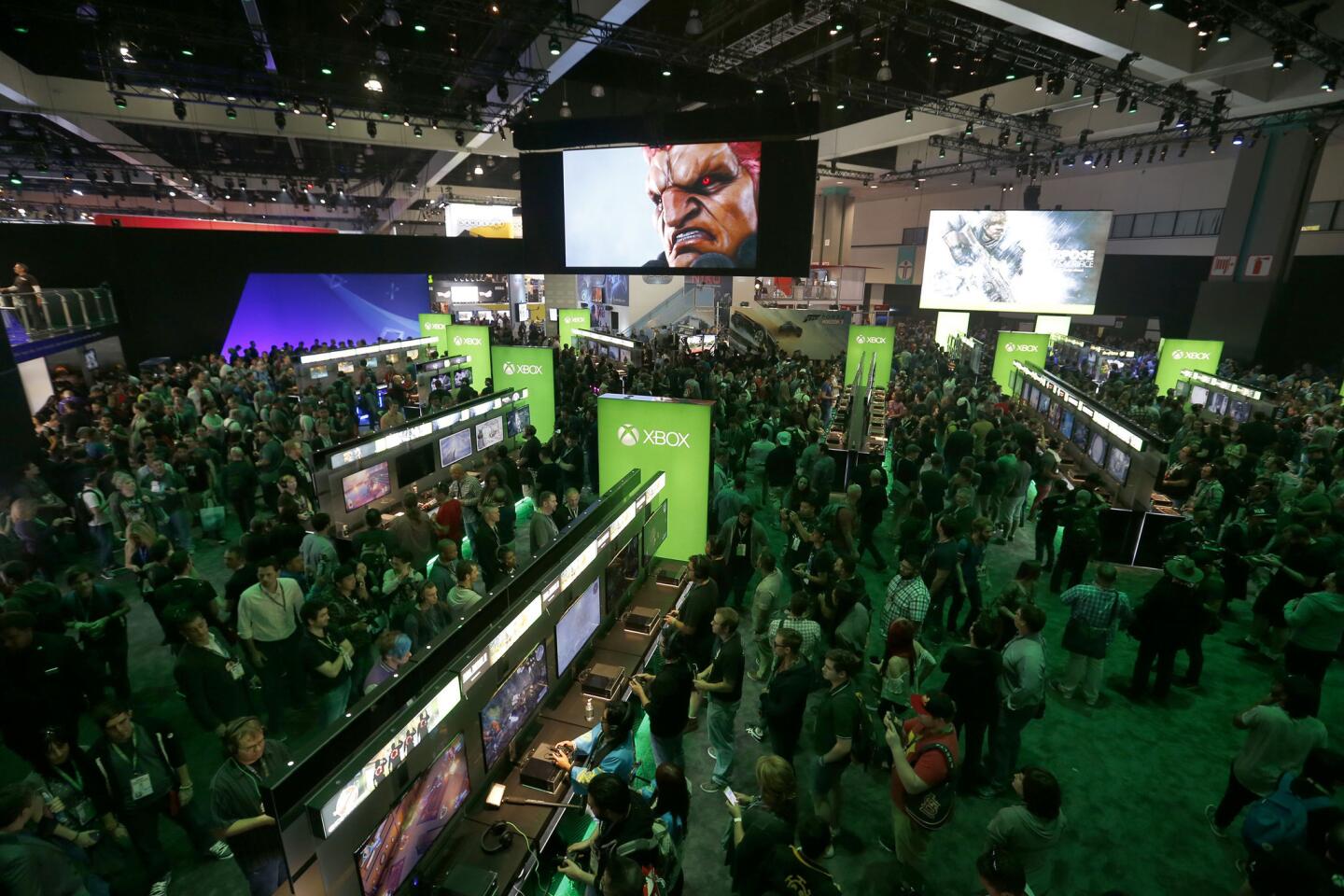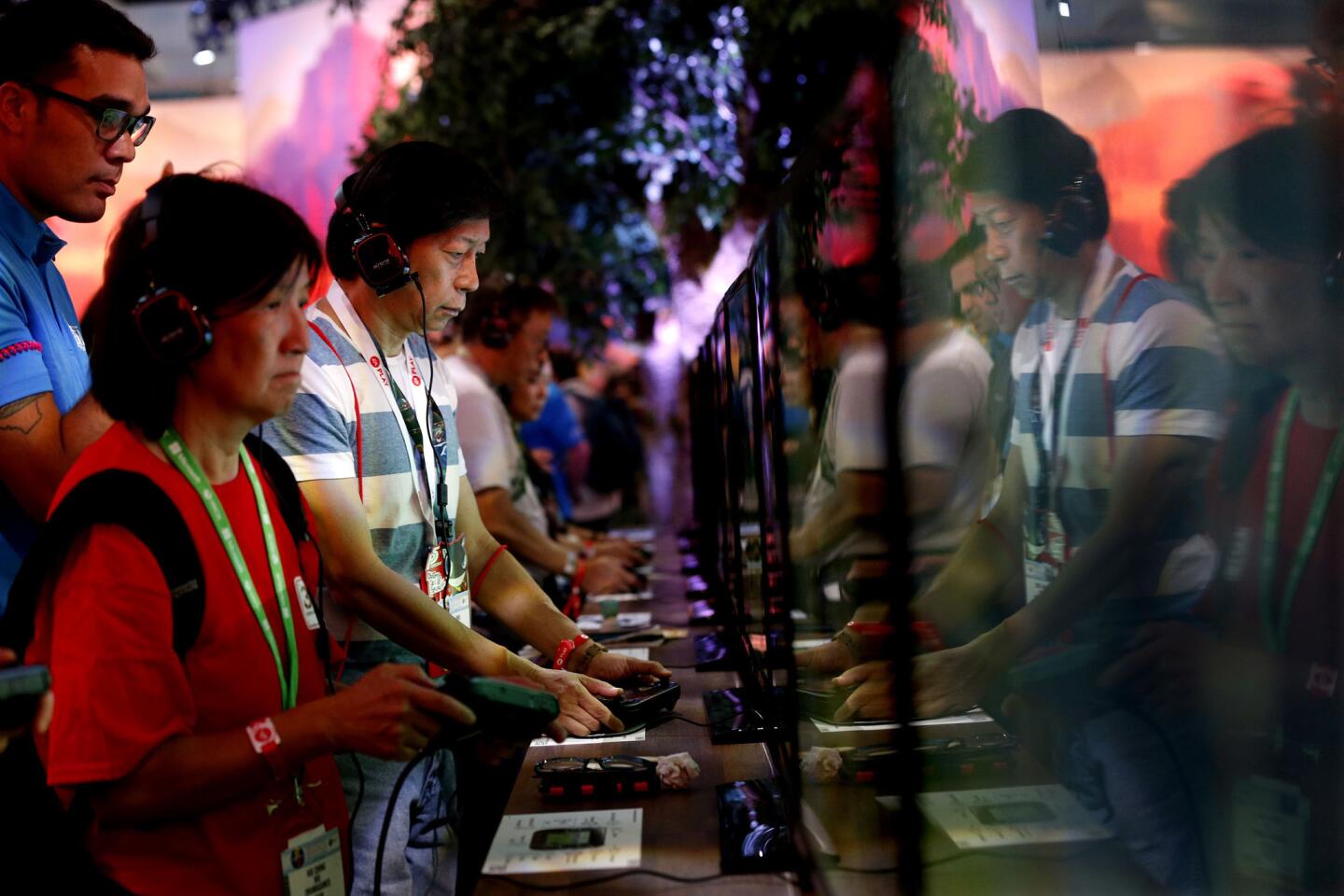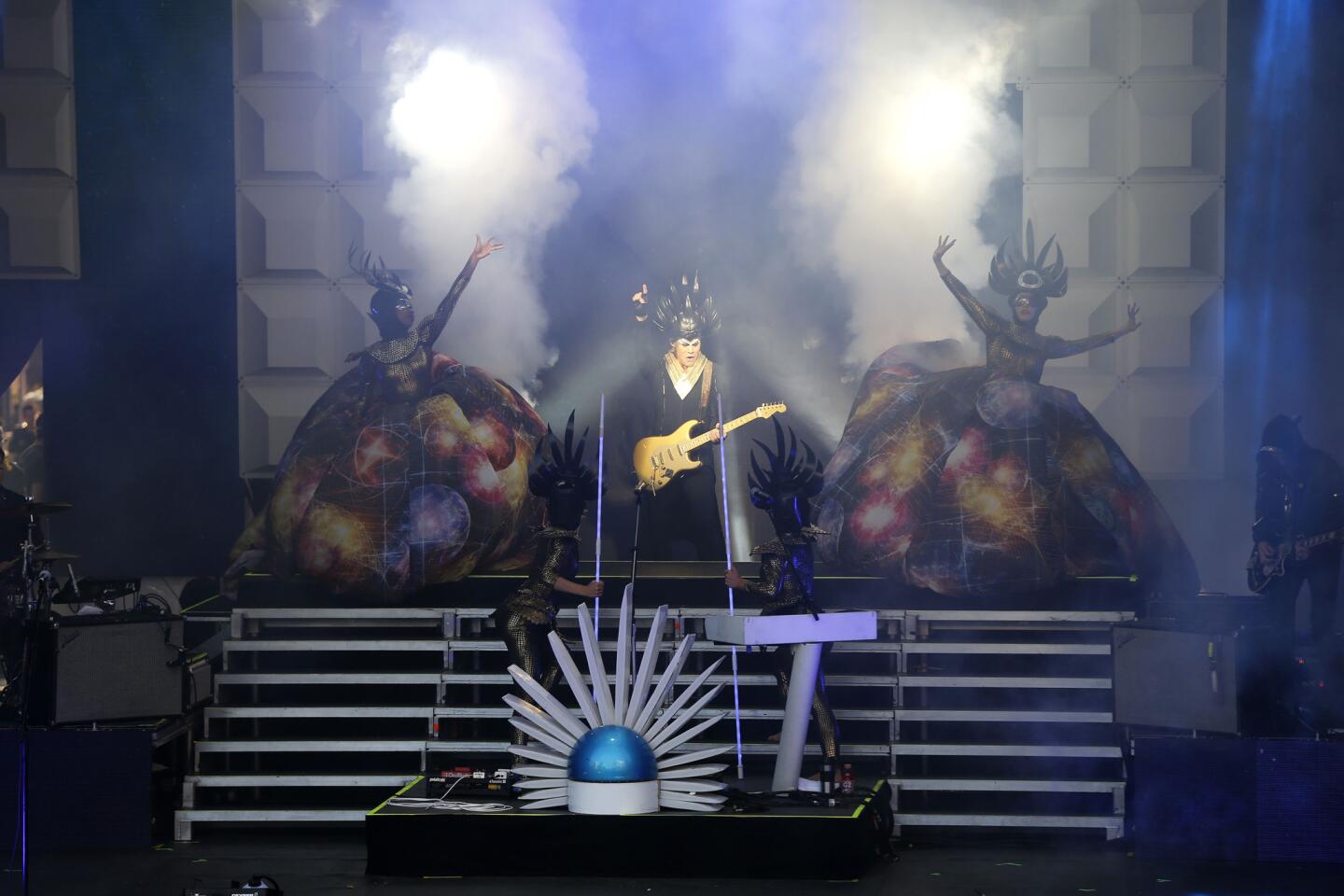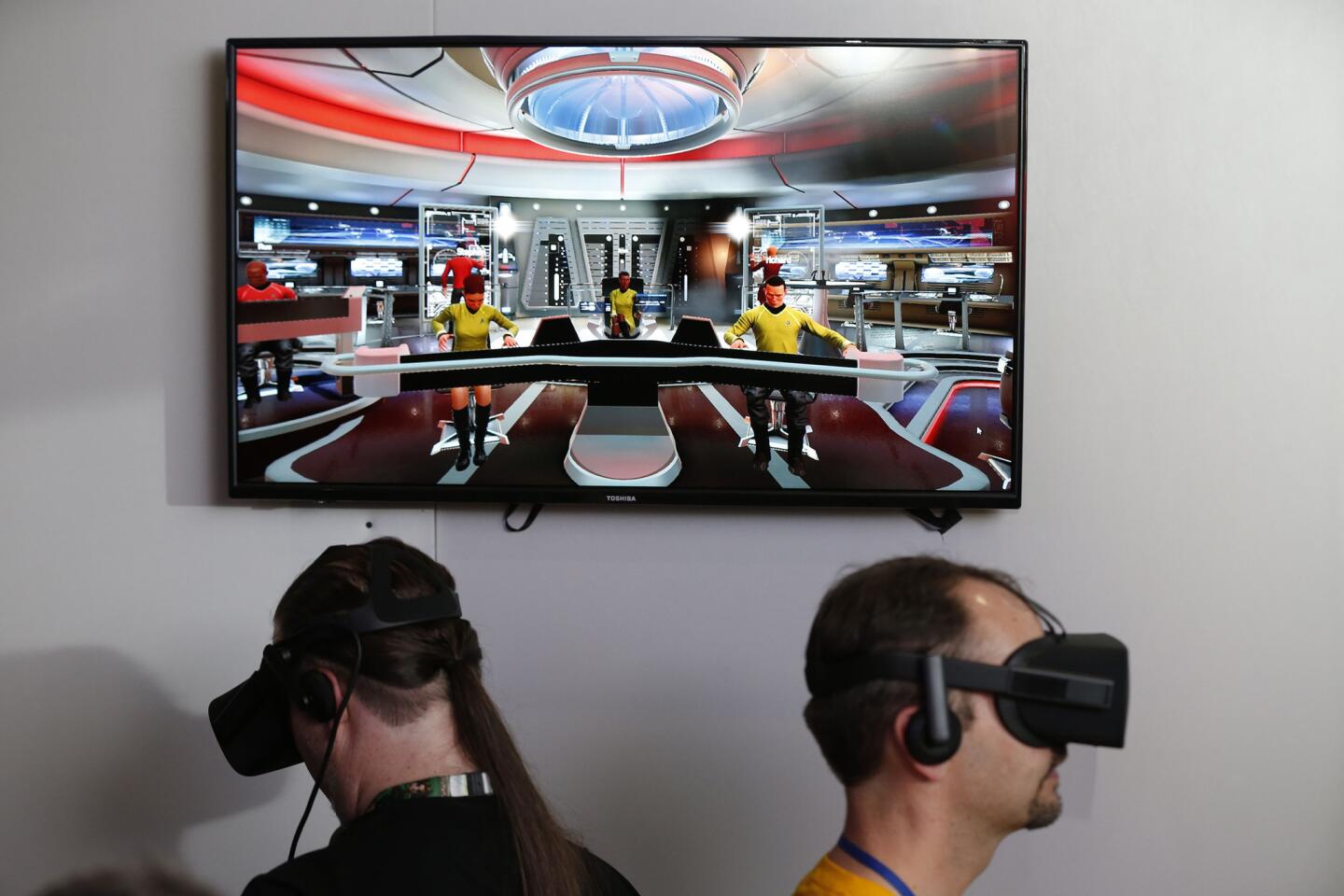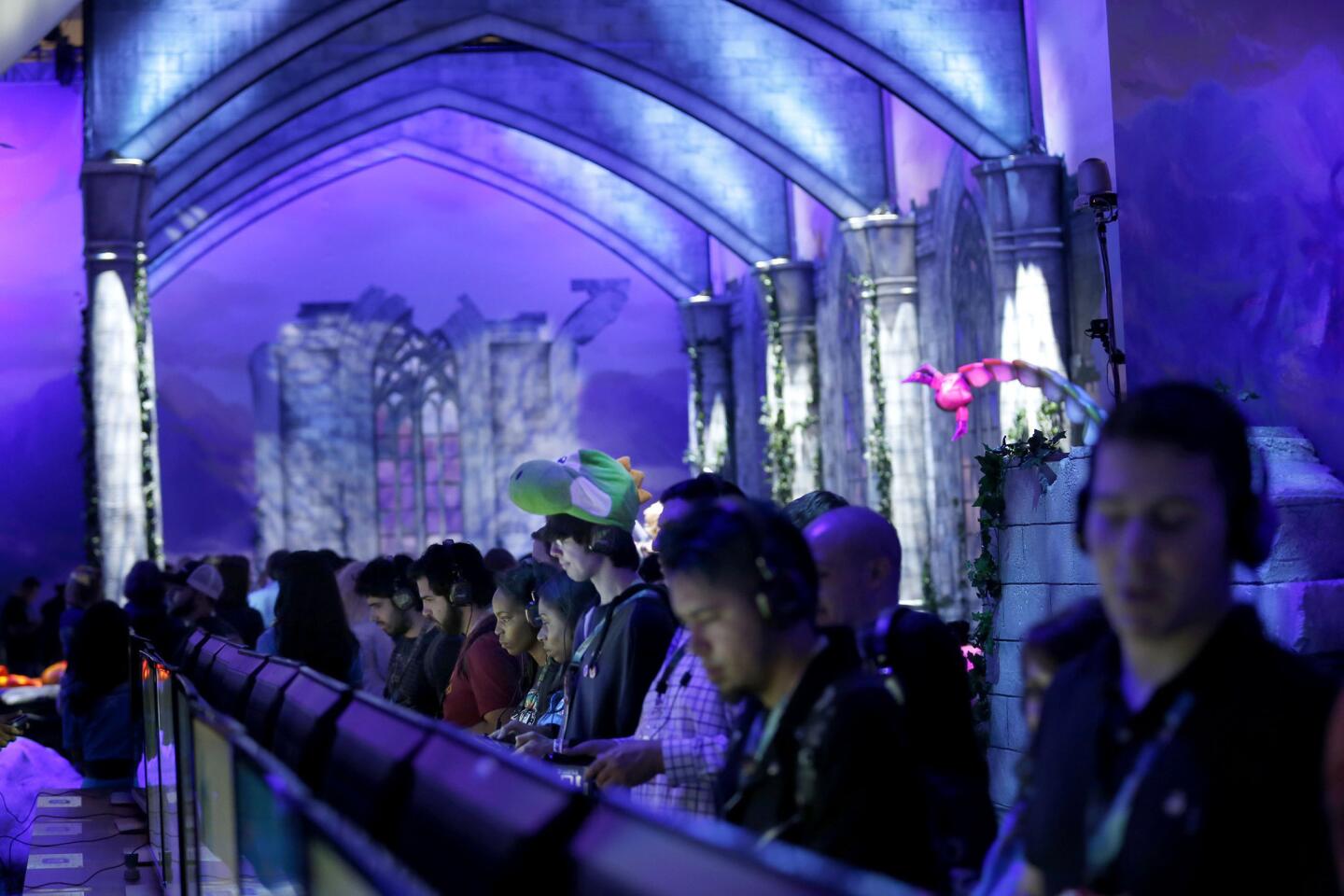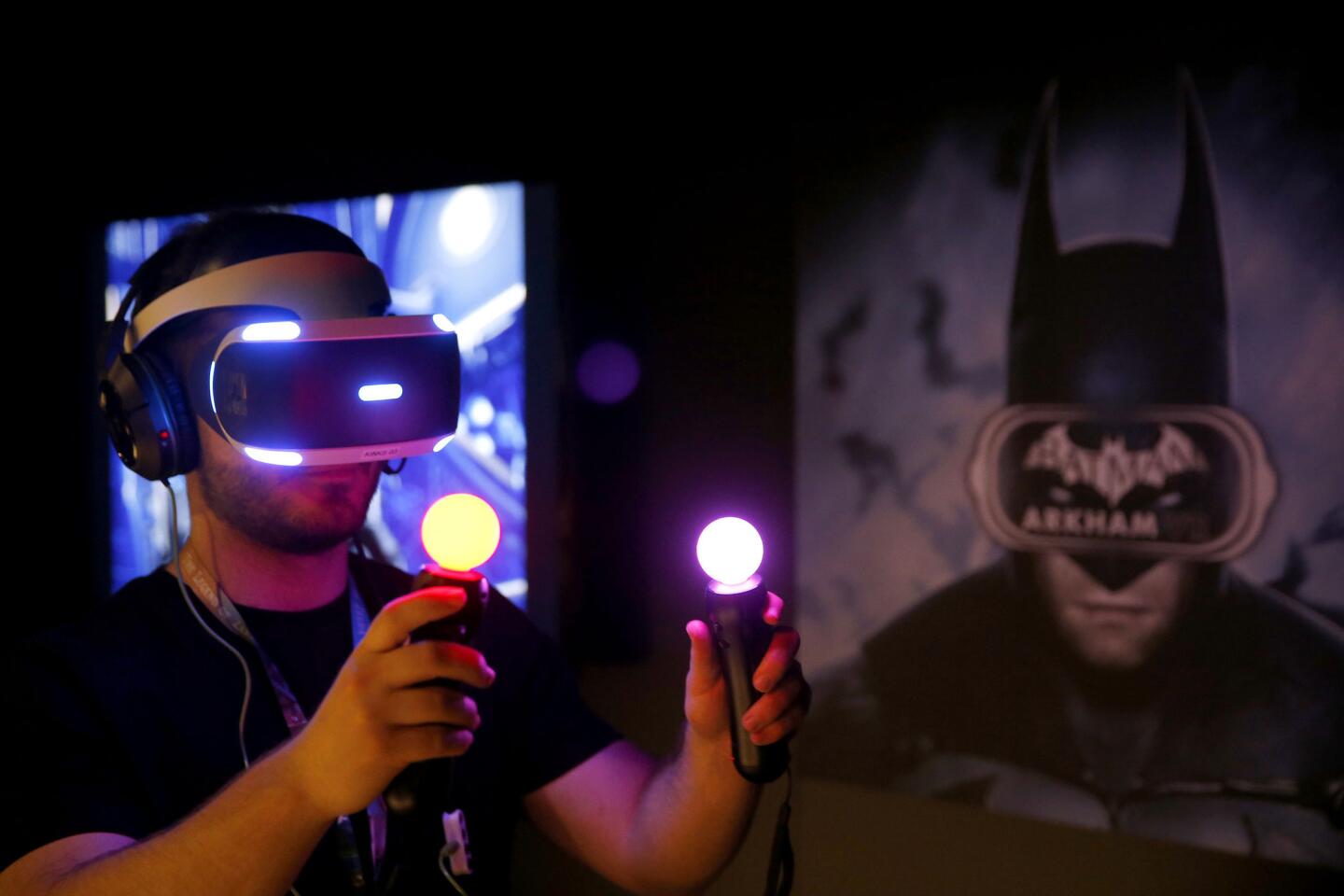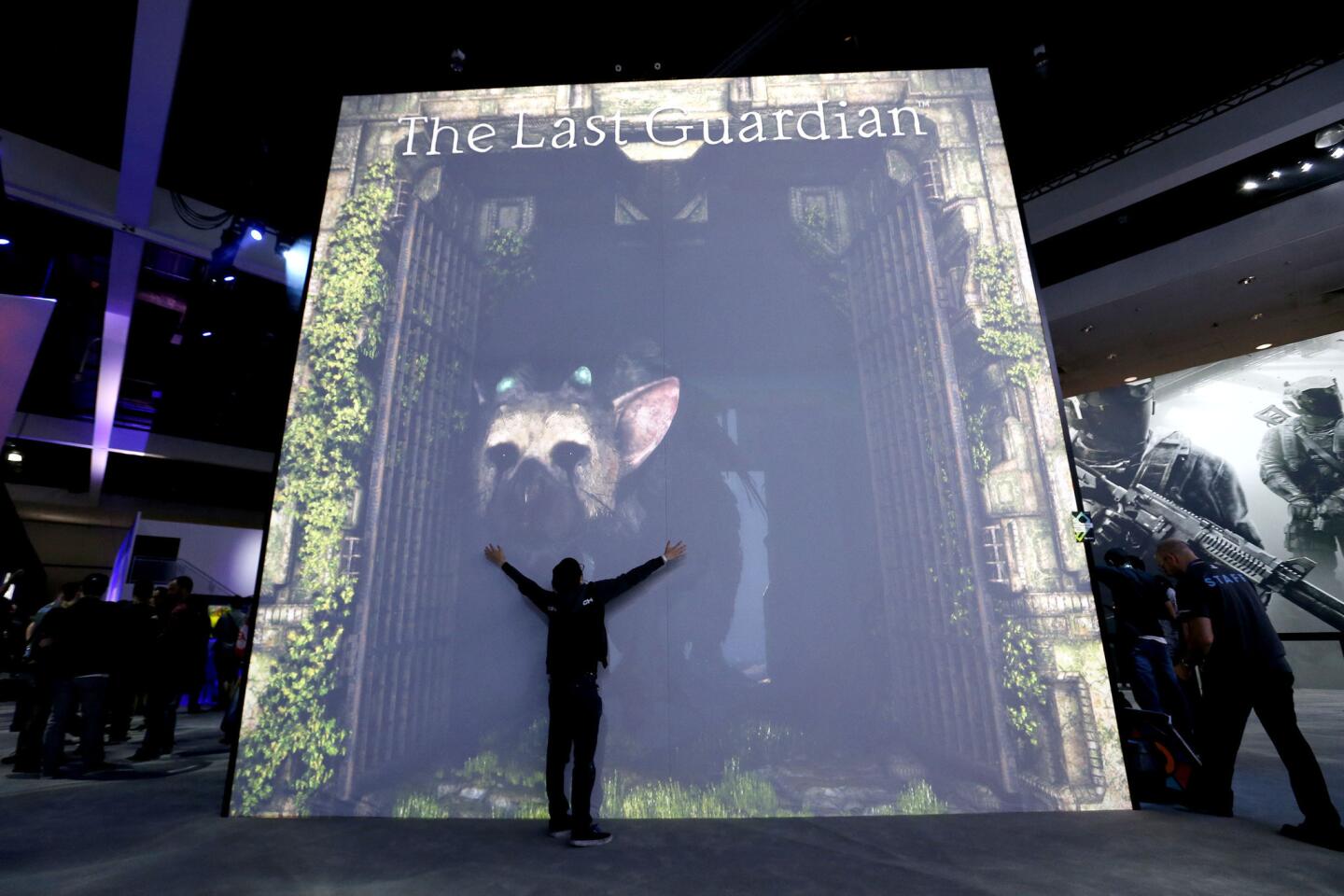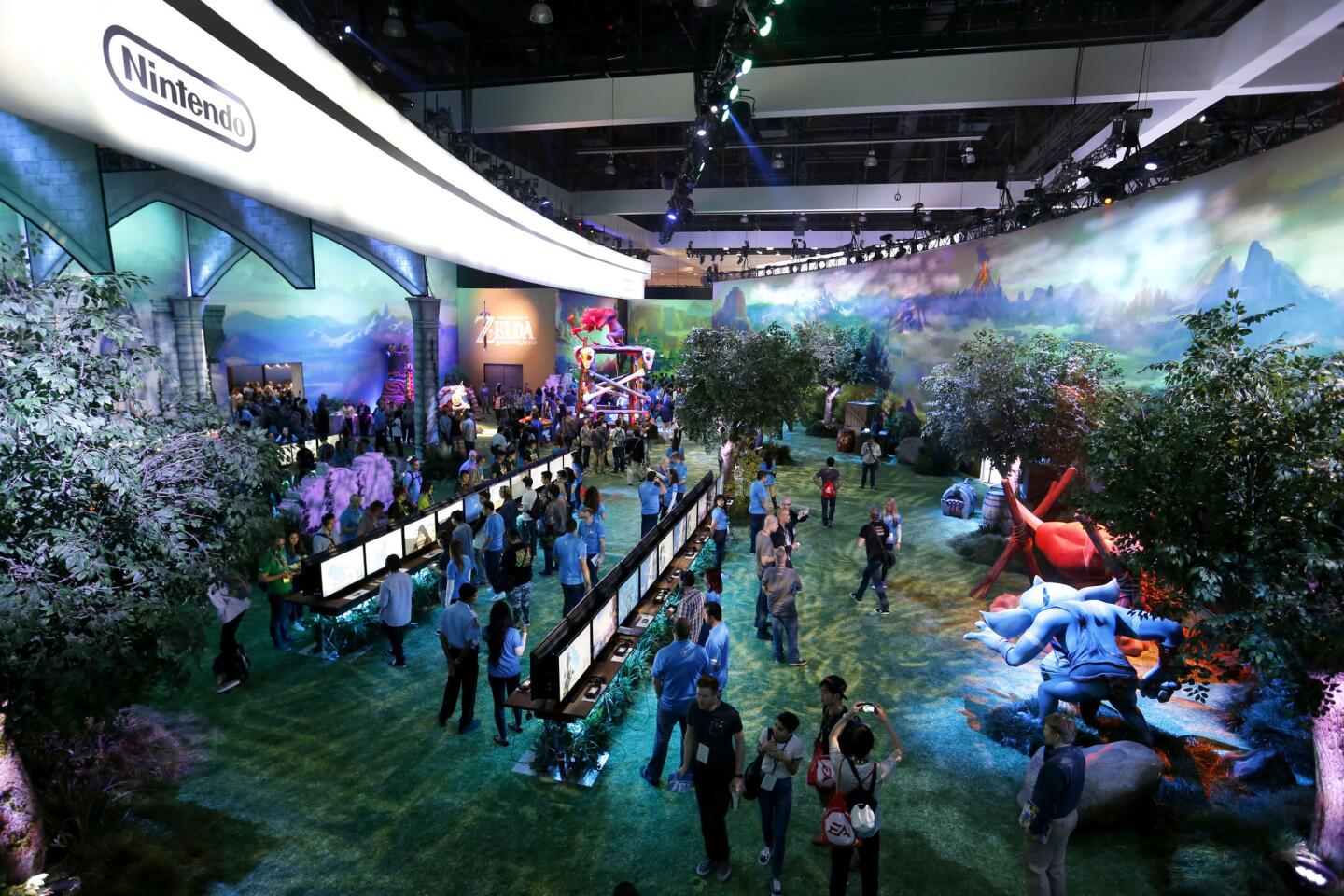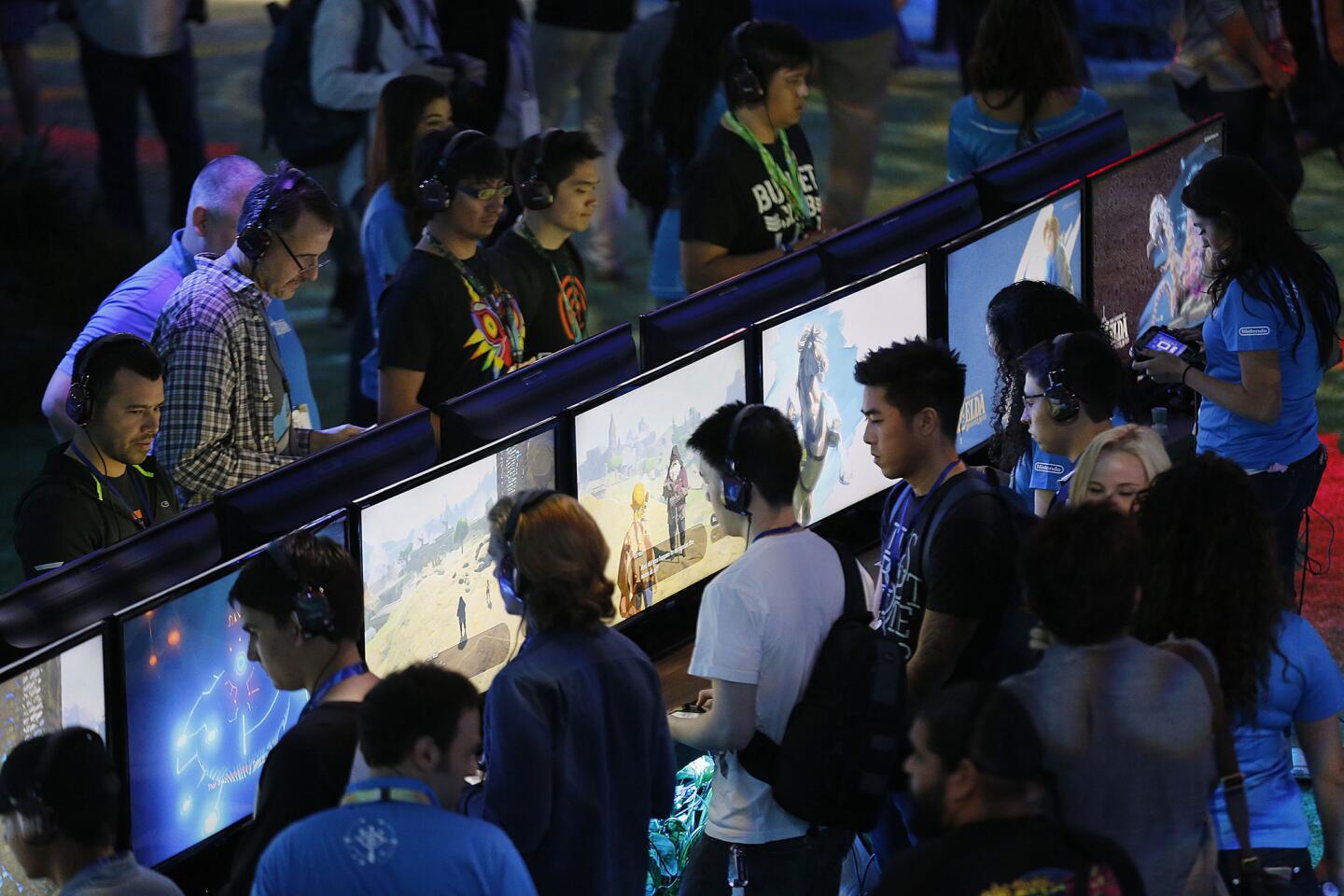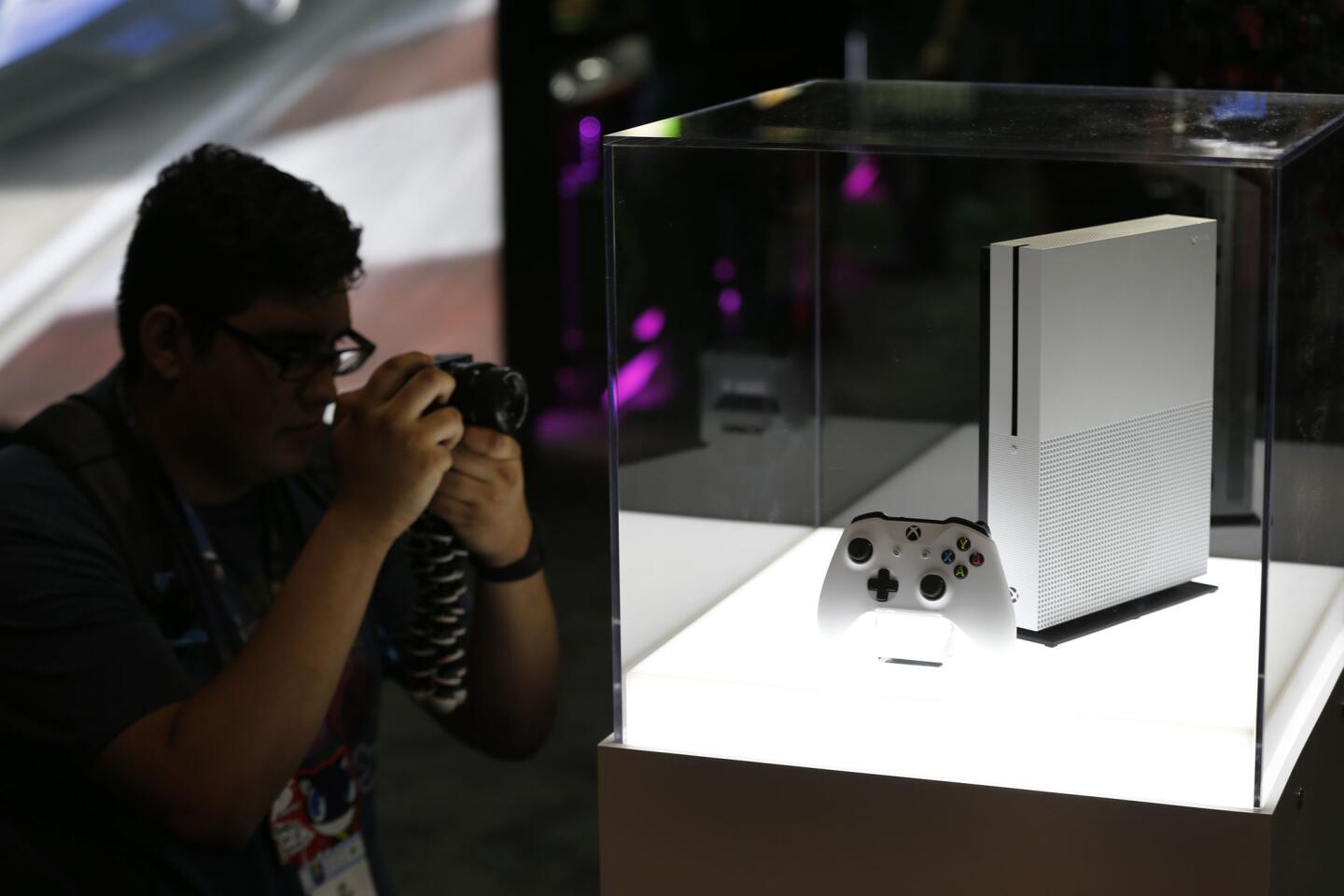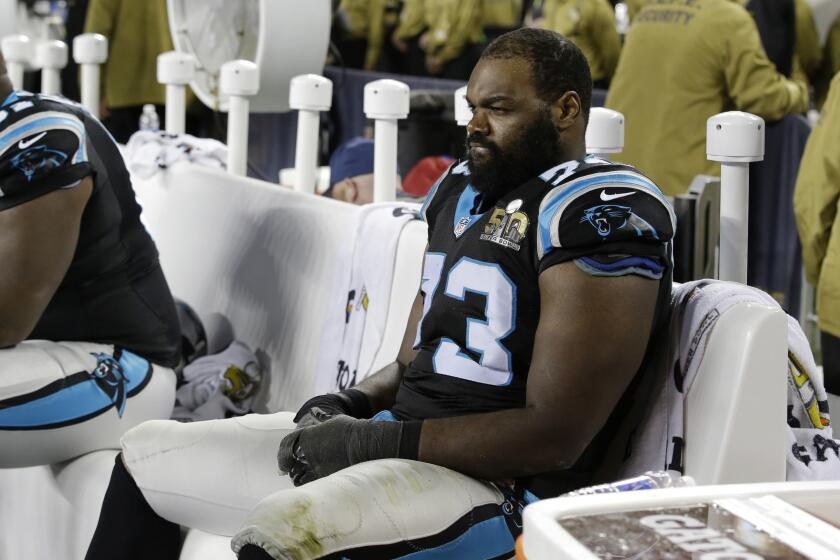‘The Legend of Zelda: Breath of the Wild’ to end the Wii U era
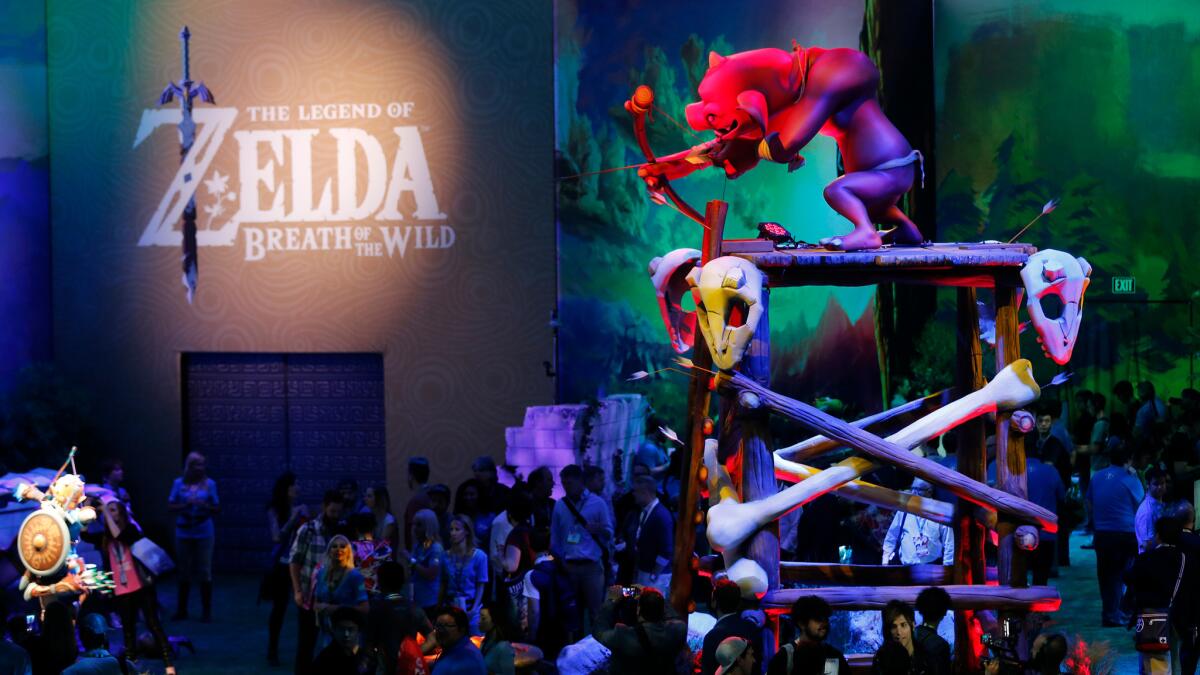
Nintendo’s troubled Wii U game console may be on its way out, but there’s still a lot of life left in its “Zelda” franchise.
The most buzzed-about game at the Electronic Entertainment Expo at the Los Angeles Convention Center was not one destined for Microsoft’s Xbox One or the PlayStation 4.
No, it was “The Legend of Zelda: Breath of the Wild.” At times, lines to play the latest installment in the sword-and-sorcery series stretched up to three hours.
When it’s released in early 2017, “The Legend of Zelda: Breath of the Wild” will be the one of the last major games for the Wii U. But Nintendo will also release the game for its NX — also due out early next year — and in fact is counting on the game to drive sales of the NX, the still shrouded-in-secrecy console that Nintendo hopes will capture the public’s imagination.
Nintendo opted not to bring the NX to E3, one of the industry’s largest platforms for new games and hardware. Instead, the company is focusing solely on “Breath of the Wild,” hosting the game in a fantasy forest-like setting fit for a theme park, one complete with giant, working models of monsters and heroes from the series.

Players watch a trailer of the game in a makeshift dungeon and then step out onto fake grass to see the hero Link, armed with a bow and arrow, towering above them. Creatures — a warped, hog-like animal and a large tentacled monstrosity — are scattered around dozens of monitors.
“When I think about my staff, I feel really bad,” said Nintendo’s Eiji Aonuma, the game’s producer who has long shepherded the series and was speaking through a translator. “They have to create a game on two different platforms.”
What’s more, they’re being asked to completely reinvent the franchise, one first introduced in the mid-’80s from Nintendo’s video game design master Shigeru Miyamoto, an artist whose resume also includes “Donkey Kong” and “Super Mario Bros.”
“The Legend of Zelda” helped define the fantasy-action genre of video games, creating a sprawling universe filled with lush forest greens and imposing dungeons. The game intermixed light role-playing game elements with arcade-like slashing, making a potentially imposing genre rather accessible.
“Zelda” also placed an emphasis on puzzles and exploration, doing away with strict linear progression and allowing players to freely wander a game world.
“The games are not about the resolution or the return with the hero’s elixir,” writes Jennifer DeWinter, a game professor at Worcester Polytechnic Institute, in her 2015 book, “Shigeru Miyamoto.” “They are about the actions, the journey, and the time spent doing things in a world. Experiencing frustration and overcoming it through skill and practice are more rewarding than a well-crafted ending.”
The games also still command a dedicated fanbase. Though the Wii U never lived up to Nintendo’s expectations, one of its top-selling games is a remake of an older “Zelda” title, “The Wind Waker,” which has sold just shy of 2 million units.
Still, Zelda alone hasn’t rescued Wii U from the dubious distinction as Nintendo’s worst-selling console. Since its introduction in 2012, the Wii U has sold just 12.8 million units. The original Wii, by comparison, sold more than 101 million copies, and Sony has reported sales topping 40 million for its PlayStation 4.
“Breath of the Wild” attempts to re-imagine “The Legend of Zelda,” bringing it into the modern open-world era of gaming, in which objectives can often be completed in any order and games can stretch well over 100 hours. It’s a game, says Aonuma, that attempts to “break the conventions of ‘Zelda.’”
“The theme for this title was, ‘Let’s just forget everything that we knew about Zelda and make something that we want, make something free,’” says Aonuma.
The theme for this title was, ‘Let’s just forget everything that we knew about Zelda and make something that we want, make something free.’
— Eiji Aonuma, Nintendo
That manifests itself in numerous ways. In some respects, “Breath of the Wild” appears to channel the original’s free-roaming spirit, but it adds more 3-D like depth and a bevy of horizontal and vertical spaces. For once, Link can jump, but he can also hang-glide across the universe and quietly sneak up on enemies, bringing more contemporary dimensions to Zelda’s combat. Foes don’t just appear, they must be hunted and stalked.
“When Mr. Aonuma was creating this game, he wanted to do something both different but also harkening back to the essence of the very first ‘Zelda’ game,” says Nintendo of America president Reggie Fils-Aimé. “Even though the first ‘Legend of Zelda’ was a straightforward progression, visually it always seemed like there was something there to go toward.”
Players now can essentially disregard the save-the-world plot and simply roam and raid enemy camps. There are some realistic flourishes too. Link’s health is no longer replenished by magical floating hearts that can be found in grass. In the new game, Link must scavenge for food and cook it. Don’t worry — this task isn’t tedious; it’s adorable, as the food does a little dance on the campfire when Link channels his inner chef.
“Breath of the Wild” also looks unlike any previous iteration of “Zelda,” the universe unfolding more like an animated film with a somewhat opaque watercolor feel.
Aonuma cites the films of Studio Ghibli as inspiration, but the cartoonish look serves another purpose. It ensures that “Breath of the Wild” feels like a “Zelda” game, giving it a lighthearted tone that’s rare in a game lansdscape increasingly filled with grit and more realistic violence.
“We realized that when users are playing the game it’s really important for them to be able to see what they are supposed to see. We realized that a very realistic art style doesn’t work in that way and that’s where an animation-style comes into play. You’re able to add onto it or subtract some elements and make it clear for the user to see what they should be seeing.”

But some aspects may be open to a little interpretation. While Link is a male hero, elements of his design are purposefully ambiguous, says Aonuma.
When images of what would become “Breath of the Wild” were shown at E3 in 2014, fans debated whether the elvish-looking character was male or female. This year, Aonuma has been asked whether fans can dictate the gender of Link in the game (they cannot).
“If a female player was playing Link, I want her to think, ‘I look up this character. I feel like I am him.’ I kind of feel like Link is a male figure, but he has an essence of femininity in him,” says Aonuma. “When we originally created Link, he had this fairy-ish persona to him. We kind of thought gender didn’t matter.
“This time around,” he continues, “we wanted to go back to creating a Link that carried the essence of both genders. I think that’s how this whole debate — is Link a boy or is Link a girl — came about.”
While the lack of a female hero is distressing, “The Legend of Zelda” endures because it has become a brand that practically synonymous with video game culture, says Charles Pratt, a game designer who teaches at NYU’s Game Center.
“What makes the ‘Zelda’ series so important is that it has stepped beyond being a franchise and become an institution,” Pratt says. “And because it’s an institution, what we want from a ‘Zelda’ game is not necessarily the same thing we want from other games.”
More to Read
The biggest entertainment stories
Get our big stories about Hollywood, film, television, music, arts, culture and more right in your inbox as soon as they publish.
You may occasionally receive promotional content from the Los Angeles Times.
